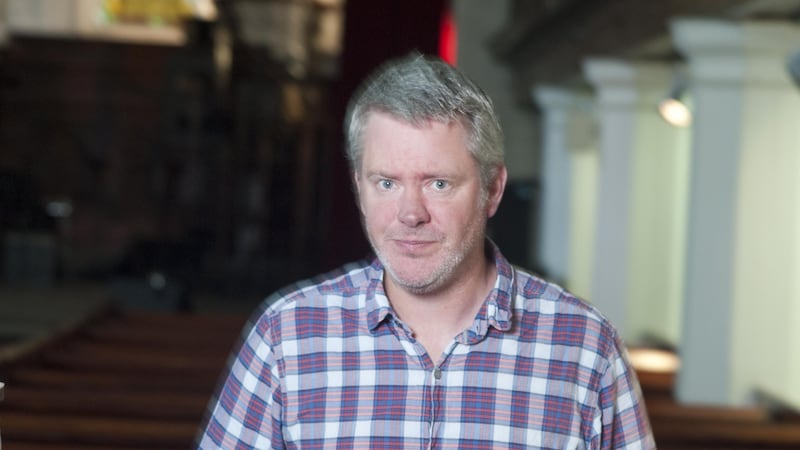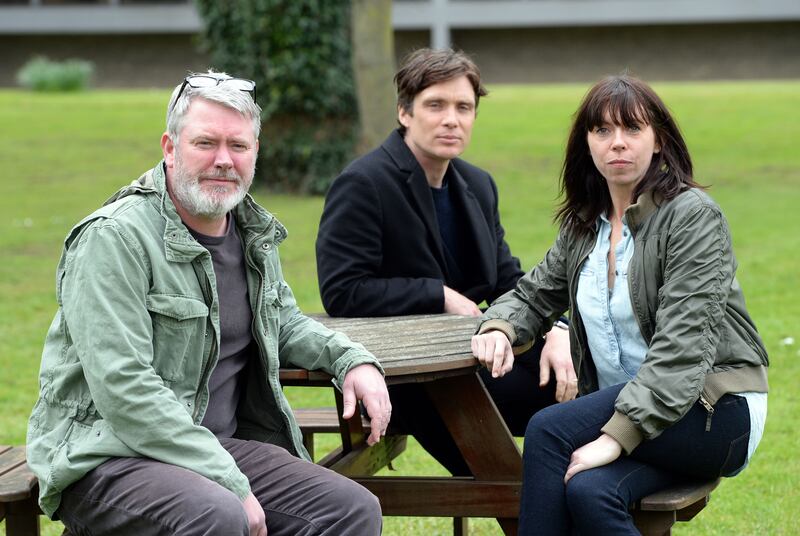Pat Kiernan, says Pat McCabe, is like Martin Scorsese. McCabe is not given to adulation but, when asked for a response to the recently announced retirement of Kiernan’s theatre enterprise of Corcadorca. this is his terse summary. Others have been more eloquent, but McCabe, who says he liked working with the company, is speaking from his experience with Kiernan, which includes Sacrifice at Easter in 2016, presented through the courtyards and ramparts of a city fortress and, in 2013, McCabe’s first play, The Big Yum Yum, seen in the more humane amenities of Cork Opera House.
That span of venues alone encapsulates the scope of Corcadorca, a site-specific promenade series of extraordinary locations yet also capable of intense containment. Now that Kiernan, the company’s founding artistic director, is moving on to foster an independent career in theatre, the plaudits are thronging in and almost every one has a geography. And an explanation.
The most immediate of these is Kiernan’s own. The closure, he says, is a reaction to circumstances, a decision made with a very heavy heart. With Corcadorca manager Fin Flynn, now moved to the Cork Arts Theatre, this was a company of two people. “Simply we did not have the resources to meet the demand to implement the strategies and policies of funding requirements,” Kiernan says.
While the policies themselves are worthwhile, they could not be realised continually in the context of unavailable resources. “In our enthusiasm and ambition we were taking on an untenable workload, and even our board members were going as far as possible to help out.”
Brianna Parkins: The Irish spice bag has arrived in Australia and not everyone is happy
What should I do if my electric car breaks down?
Matt Williams: In cynical times, savour the new coaches who want to make the world a bit better
Political stupidity of Fianna Fáil four could see Ireland end up with a bottom-of-the-barrel job in Europe
As Paul O’Donovan, chairman of Corcadorca’s board, agrees that Corcadorca had arrived at a point of critical mass in terms of arts funding. “The Arts Council insists on an institutional approach for companies which are not institutions and while the money’s good it’s not European good. We developed our financial and production strategies but the funding came back to us top-sliced. A large organisation may be able to handle that but not a small one and it had become a case of looking at a script for a cast of two where you need four. After 31 years there came a point at which we realised we could not get to the next stage of development.”
“I never saw a time when I thought Corcadorca could run out of ideas,” says costume designer Joan Hickson, mindful of its formative role in so many theatrical careers in Ireland. “So many of us believed in it and in the innovative nature of the work, which allowed designers to be innovative as well. I always felt that Pat Kiernan had confidence in me, and really I was never fazed by anything after that.”

For composer Peter Power of the Sparsile Collective, this departure leaves “a devastating hole” in Ireland’s creative ecology. Taken on as an apprentice at a time when he was wondering if he could make a professional career in music, he says this was also the dream time in Corcadorca, when Kiernan had his vision “and we all went along with it”. The opportunities offered through that engagement proved of great importance to him subsequently, his six or seven productions with the company still part of the fabric of what he does now.
“This is not a good sign. The closure of a company which has been doing excellent work for 31 years is a signal of something more and while the reasons may be complex I believe it indicates an administrative weight which is very difficult to manage. And it’s important to name the scale of what’s been lost. This is not a negligible disappearance.”
Corcadorca is not without its rewards and awards but Power feels, like the song, that you don’t know the value of what you’ve got until it’s gone, and these weeks of local and national mourning are loud with territorial memorials. Disco Pigs (1996) is a legend now to the intervening generation, which has its own treasury of locations, but it marks the lasting collaboration of stalwarts such as lighting designer Paul Keogan and set designer Aedin Cosgrove, whose latest work for the company was Far Away in 2018. “I am, to be honest, absolutely heartbroken at this closure,” says Keogan. “It was fantastic to be part of that design ensemble.”

A Christmas Carol (1994) at the former women’s jail may be only a tender haunting now but The Trial of Jesus (1999), a nightmare for lighting designer Paul Denby in all its spectacle and terror, keeps its city-centre place among the events of millennial awe. The Merchant of Venice (2005) played through three sites with Roma Patel’s settings asserting the imaginative brilliance of Corcadorca’s site-specific credentials.
Memorable locations range from Woyzeck at the Haulbowline naval base to boardrooms, Elysian apartments, theatres as for The Winter’s Tale (2011) at the Opera House, uncompleted housing developments, parks and urban greens, abandoned factories or warehouse, streets we knew without knowing them, heights and glens and shipping lanes. As the artist Colm Murphy puts it: “Corcadorca made you notice places that otherwise you might not have seen. Even the politics of actually getting into them became interesting.”
“The audience was always there,” says Mel Mercier, composer and Irish Times Theatre Award-winner for his Far Away soundscape. “The journey was part of the excitement.” Although not involved in Corcadorca’s funding discussions he had been picking up lately on the anxiety around the realisation that the company was increasingly unable to deliver the kind of production for which it was renowned. “That was very painful, being unable to deliver.” Consoled by the quality and consistency of the Corcadorca achievement through the years there is also the regret for the collateral loss of the company’s theatre development centre, “a marvellous innovation for young theatre-makers”.

While Fin Flynn is justifiably proud of her contribution to Corcadorca’s achievement and Kiernan’s “boundless vision” in bringing theatre to more diverse audiences she also recalls the skilled and dedicated stage, production and technical crews who “made the magic happen”. But it was never just one man making the magic. That community of magicians included writers such as McCabe, Enda Walsh, Ray Scannell, Kevin Barry, Jocelyn Clarke and Gavin Quinn, as well as actors Eileen Walsh, Derbhle Crotty, Cillian Murphy and Pauline McLynn, to name only a few.
There were also the municipal teams such as former conservation officer Pat Ruane and the city and county council arts offices. Although the city hall’s financial grants to Corcadorca were important but not large, it was, as, the city arts officer Michelle Carew points out, the council’s provision of a co-operative infrastructure which allowed the crucial permissions for opened buildings, closed-off streets, marshalled parkland, contacts with other agencies, all, she says, to give access and security “through a relationship which we valued so much”. It was landscape and parks officer Liam Casey who had to build the submerged setting for A Midsummer Night’s Dream (2001) at FitzGerald’s Park so that Puck could walk on water. But he did and we watched, stilled by nightfall, silence and wonder.
There was immense value too in Corcadorca’s connection with the Cork Midsummer Festival, where festival director Lorraine Maye says its impact and importance cannot be overstated. “It showed you can produce world-class work in a small city and it’s sad to see the end of such a brilliant company. It also leaves a big gap for us now but perhaps that could be an opportunity as well, an opportunity to see what else might be done in terms of professional theatre in Cork.”
That Midsummer Night’s Dream was Mel Mercier’s first work with Corcadorca. Now with the reckoning he believes that “we always understood that these productions were ephemeral”. So no Scorsese after all; instead his words echo those of The Tempest in 2006, with Enda Oates announcing Prospero’s warning that our revels now are ended, that these our actors were all spirits, that the cloud-capp’d towers, the gorgeous palaces, the solemn temples would dissolve and “like this insubstantial pageant faded, leave not a wrack behind”.
Except, that is, for Peter Power’s question hovering in the disturbed environment of Ireland’s creative community: why now for this vanishing?





